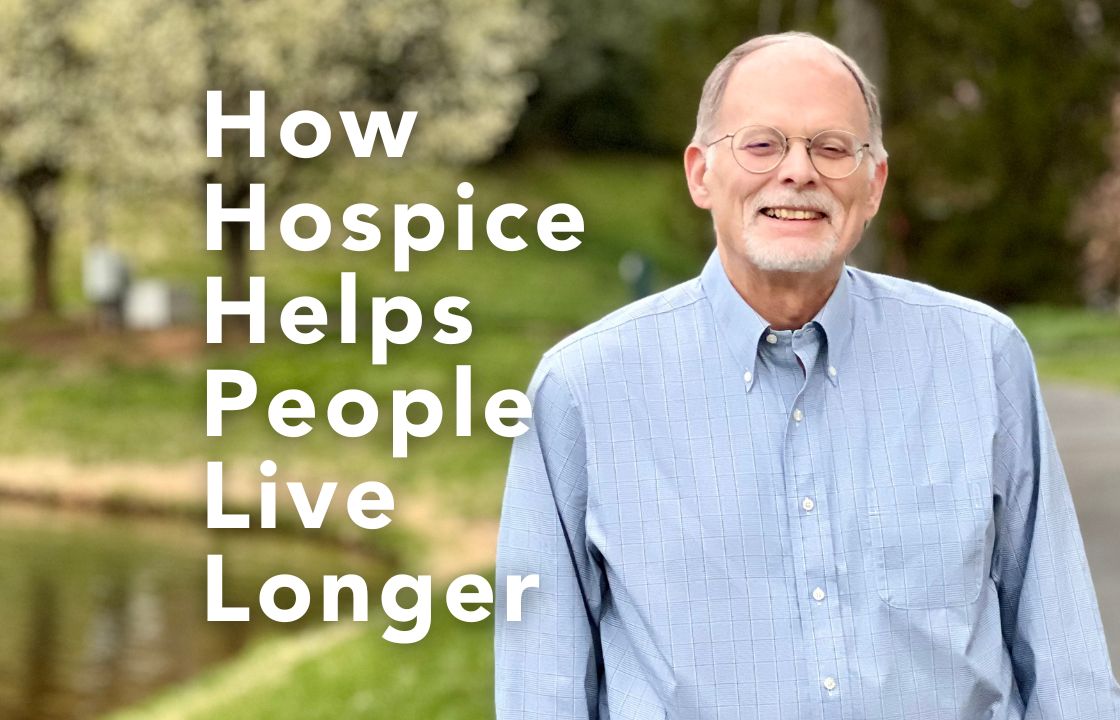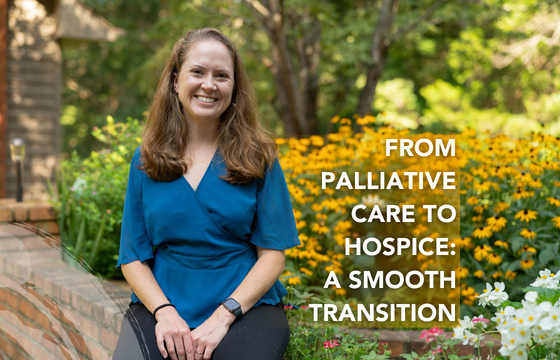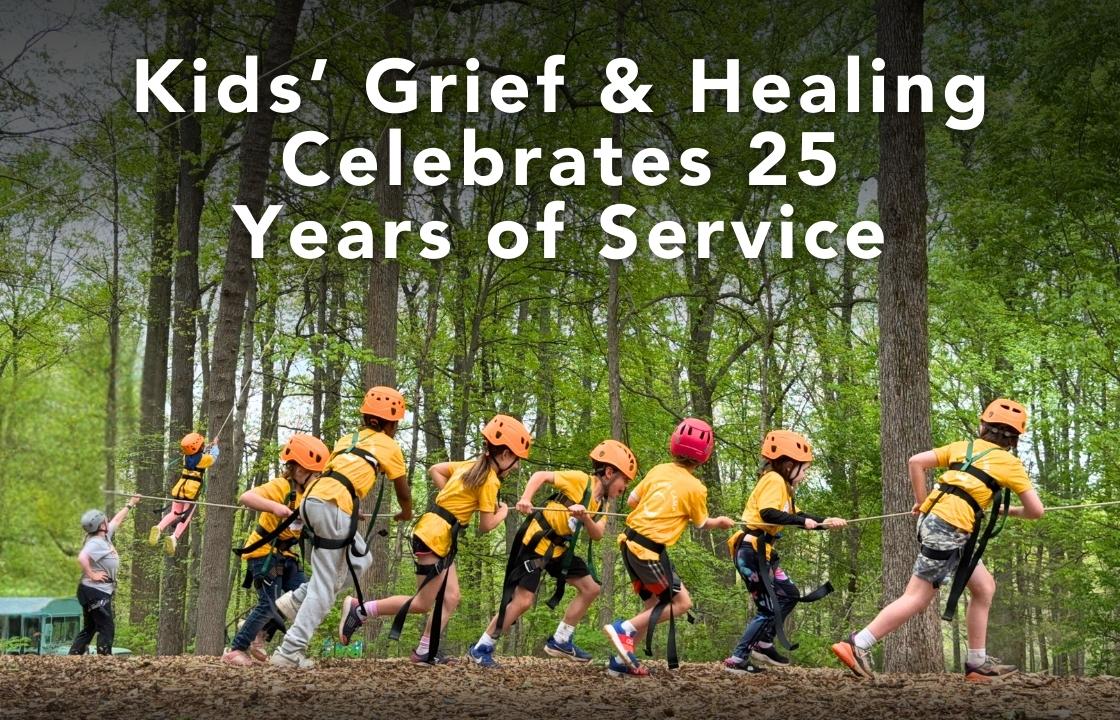If you’ve ever read Atul Gawande’s Being Mortal (and if you haven’t, you should), you may recall this paragraph:
…researchers followed 4,493 Medicare patients with either terminal cancer or end-stage congestive heart failure. …curiously, for some conditions, hospice care seemed to extend survival. Those with pancreatic cancer gained an average of three weeks, those with lung cancer gained six weeks, and those with congestive heart failure gained three months. (Emphasis added.)
It’s a fact that might surprise some, but for those familiar with hospice, it makes perfect sense.
To shed light on how hospice care impacts a patient’s longevity, we sat down with Hospice of the Piedmont Medical Director, Will Anderson, MD, HMDC. Dr. Anderson has been practicing medicine for more than four decades. In 2000, he shifted his focus from general internal medicine to focus on geriatric patients and earned board certification in Hospice and Palliative Medicine in 2012.
“It’s been clear for a long time that those who elect hospice care die more peacefully than those who insist on life prolongation at any cost,” says Dr. Anderson. “But, it has remained counterintuitive that hospice care may prolong life.”
Does Hospice Intentionally Hasten Death?
Although this article explores how hospice helps people live longer, we should clarify a few things. First, hospice does not seek to artificially lengthen life nor speed its end. Second, we should be clear upfront that not all hospice patients strive to prolong their days. Some patients on our service would freely tell you they are “ready to go” and simply want to do so with as much comfort and dignity as possible.
Yet, the mistaken belief that hospice somehow accelerates the dying process lingers in the minds of many. According to a 2022 study, about 30% of participants believed that “hospice intentionally hastens death and the dying process.”
“Something Seemed to be Missing.”
Over the course of his career, Dr. Anderson has experienced – professionally and personally – the beginning of a shift in how medicine is practiced.
Looking back on his early years, he observes, “Most of my formal medical education consisted of lectures from academic specialists about the latest advances in their fields. Collectively, they gave the impression that immortality was just around the corner, though we knew that was not possible or perhaps even desirable.”
Early in his career, he had an important realization. His father was diagnosed with esophageal cancer, and he had just undergone surgery. It was not successful.
“I was astonished by how little I, my colleagues, or the healthcare system had to offer either of my parents once ‘curative’ procedures or drugs had failed,” he says. “Something seemed to be missing. I remember thinking: We’re on our own now.”
The missing piece, of course, was hospice. It was the late 1980’s. The nonprofit hospice movement was beginning in the US, and misconceptions were still common. “To recommend hospice was to give up, and we never gave up,” he says.
Why Hospice Prioritizes Quality of Life
If you know anything at all about hospice, you likely know that hospice is committed to improving quality of life. Medical teams work to alleviate pain and discomfort. Alongside medical care, social workers and chaplains offer spiritual and practical support. Nursing assistants lend a hand with daily activities.
It seems only natural to assume that an increase in the quality of life leads to a decrease in the quantity.
If you’ve ever shopped for anything in your life (and you probably have), you’re familiar with the concept of trading quality for quantity. For example, let’s say you have twenty dollars to spend on socks; you can likely choose between one pair of fancy socks or six pairs of basic socks. That’s just the way the world works.
So, you’d be forgiven for assuming the same thing about hospice care. Surely, an increase in quality of life must necessitate a decrease in quantity. Right? Wrong. The data shows that in addition to improving quality of life, hospice also seems to extend the quantity.
Hospice is six pairs of fancy socks.
Does Hospice Prolong Life?
Every medical journey is unique, so it’s difficult to generalize. Indeed, the 2007 study in Being Mortal found no difference in survival time for hospice patients with breast, prostate, or colon cancer.
However, since then, numerous studies have highlighted situations where hospice care is linked to increased longevity.
- A 2018 study of patients with advanced heart failure found that those in hospice had longer median survival compared to those receiving standard care (80 days vs. 71 days).
- A 2015 study of lung cancer patients noted that the hospice group had a longer median survival time compared to the non-hospice group (511 days vs. 402 days).
- A 2014 study involving metastatic melanoma patients found that those enrolled in hospice for 4 or more days had a longer median survival time (10.2 months) compared to those who did not enroll (6.1 months).
- A 2011 study among elderly lung cancer patients showed that survival slightly favored hospice patients at 1- and 2-years post-diagnosis.
Perhaps just as importantly, no studies have indicated that enrolling in hospice shortens life.
How Does Hospice Help People Live Longer?
So, now that we’ve reviewed the medical literature (and footwear analogies) about longevity in hospice, you may be wondering: How does hospice actually help people live longer?
The literature above and our conversation with Dr. Anderson suggests a few possible reasons why people on hospice sometimes live longer.
1) Avoidance of Overtreatment
Patients nearing the end of life are often already in fragile health. Choosing hospice allows them to sidestep the risks of aggressive treatments like high-dose chemotherapy or invasive procedures, which can carry a significant mortality risk.
To better understand this phenomenon, Dr. Anderson points to a lecture from an oncologist at Queen’s University in Ontario. Dr. Christopher Booth notes that most new cancer drugs are approved because they shrink tumors on a CT scan. At first glance, that might sound like amazing news. But, as Dr. Anderson points out, it conveniently glosses over the fact that these new drugs “do not extend life by more than a month or two, nor do they improve its quality.”
2) Enhanced Monitoring and Treatment
While hospice doesn’t provide 24/7 care, regular visits from nurses, social workers, chaplains, and volunteers offer increased personalized attention. Additionally, all these folks provide guidance and tools to full-time caregivers – usually family members.
This increased attention can lead to better tracking of symptoms and faster responses to treatable discomfort that might otherwise increase the likelihood of death – think providing oxygen to someone having trouble breathing.
3) The Benefit of Psychosocial Support
“We, doctors, with the best of intentions, have been overpromising and underdelivering for decades. It’s largely because we don’t ask patients with serious illness what matters to them,” says Dr. Anderson.
As we’ve discussed, hospice is much more than medical support. Hospice listens to patients. Indeed, several academic studies have pointed out the positive impact of social and emotional support on mortality rates. So, it shouldn’t be surprising that hospice’s goal of addressing a patient’s emotional, social, and spiritual needs may tend to prolong life.
4) Late Referral to Hospice
Some individuals enter hospice very late in their illness, which might create the false impression that hospice shortens life. “Late referrals continue to perpetuate the fallacy that the holistic approach of hospice shortens life,” says Dr. Anderson.
“The truth is that the aggressive disease-directed treatments most patients receive in the months before hospice admission are much riskier than any of the established, highly effective, highly individualized treatments patients receive as part of hospice care,” he says.
5) Elimination of Burden
Some terminally ill patients may feel like a burden to their families. Hospice care can relieve families of the burden of caregiving, allowing patients and families to focus on the simple joys of everyday family relationships. This sense of relief may positively impact a patient’s will to live.
Conversely, in his lecture, Dr. Booth of Queen’s University notes the decreased quality of life associated with some aggressive treatments. “Time spent pursuing cancer treatment in our waiting rooms, emergency departments, or chemo units is time that cannot be spent fishing, traveling, or visiting loved ones,” he continues. “This time trade-off becomes most difficult near the end of life, when time is short, and the benefits of our treatments are often very small.”
Conclusion
It’s important to reiterate that these factors don’t guarantee extended life for all hospice patients. Everyone’s circumstances are unique.
Nevertheless, in a world filled with healthcare misconceptions, it’s important to pause and reflect on the available data. As advocates for hospice care, we hope this article sparks valuable conversations with your loved ones.
Hospice is about more than just graceful endings; it’s about embracing the days we have left and, hopefully, enjoying our six pairs of fancy socks.



